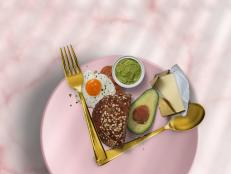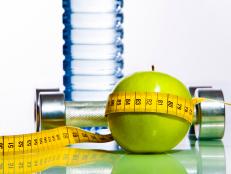11 High-Energy Foods for Intermittent Fasting
These foods will help you sustain your energy in a healthy way.

nicolamargaret/Getty Images
If you’re trying out intermittent fasting (IF), going 16-hours without eating may leave your energy levels as droopy as a wet noodle — at least at first. After the body adjusts to the IF routine, the feeling of having more energy will probably increase overall, as could other benefits. Research is ongoing, but potential benefits from an IF routine could include lower inflammation, better blood lipid profiles, the ability to prevent weight regain and mild weight loss, says Robert Murray, MD, Professor of Human Nutrition at the College of Education and Human Ecology at The Ohio State University. "The mechanism is unclear, but fasting may lower inflammation, possibly through the GI tract."
Fasting may give the body a chance to "clean-up" damaged cells so they don’t stay in the body and potentially lead to diseases like cancer or dementia. During the limited eating times of any IF routine, it’s important to fuel up with nutrient-rich, gut-healthy foods. Here’s our list of high-energy foods to help get in — and stay in — the IF groove.
Artichokes: Artichokes and Jerusalem artichokes (and asparagus, jicama, apples and bananas) contain prebiotics. Prebiotics are less-digestible carbohydrates in fiber-rich foods which help feed the good gut bacteria. Fasting gives the body a chance to rest and repair from the digestive process, potentially lowering overall inflammation markers in the body, says Murray. When digestion starts up again after the short fasting periods, it’s important to nourish the good gut bacteria with prebiotics.
Garlic and Greens: Garlic, onions and leeks along with greens like Swiss chard and spinach are also rich in prebiotics and inflammation-fighting antioxidants. Because of the short IF feeding window, nourishing the body with all the needed nutrients is essential. Adding garlic and greens to dishes can be a good way to do this.
Prunes: Prunes contain fiber, magnesium, vitamin K and natural sweeteners. Getting the recommended three servings of dairy during an eight-hour eating window takes some real planning, so eating additional bone-strengthening foods like prunes can help. Eating about five prunes daily has been shown to help with bone health. Prunes, dates and other quick-energy-providing dried fruits are naturally sweet treats; prune puree (prunes thinned with water) can be a budget-friendly sweetener when stirred into baked goods, creamy desserts and power balls.
Yogurt: Yogurt and other calcium-rich dairy items do double-duty to provide energy-sustaining protein and bone-strengthening calcium during the limited eating window. An additional benefit of yogurt, skyr, kefir and aged cheeses is that they provide probiotics to help promote gut health.
Barley: Barley along with oatmeal contain a type of fiber known as beta-glucan, which is linked to better blood sugar control to help your energy levels stay steady, without quickly crashing to "hangry" status. Add quick-cooking barley and oats to dishes to also boost antioxidant levels.
Pasta: Pasta sometimes gets a bad rap, however, people eating according to the Mediterranean Diet know that pasta can help with sustained energy. But cooking is key. First, start with a high-quality pasta (probably not a store-brand); secondly don’t overcook it. Overcooking makes pasta water-logged; cooking pasta as directed to al dente (tender with 'bite') makes it digest more slowly. Al dente pasta gives sustained energy, as when eaten at dinner before a 16-hour fast.
Lamb: All lamb is grass-fed, so it’s a source of beneficial CLA’s (conjugated linoleic acids). Lean beef is also a source of CLA’s, and both lamb and lean beef are lower in saturated fats and packed with energy-sustaining protein. They are also important sources of iron and zinc, which if you don’t get enough of can leave you feeling tired and irritable.
Peanut Butter: Peanut butter and nuts are incredibly helpful when it comes to keeping energy levels up, as well as providing satiety, since they offer an ideal proportion of carbs, protein and healthy fats, says Carolyn Williams, PhD, RD, author of the new Meals That Heal: 100+ Anti-Inflammatory Recipes in 30 Minute or Less. Snacking on almonds, adding toasted walnuts to a salad or spooning peanut or other nut butter on an apple are some of the ways Williams enjoys nuts daily.
Cocoa: Enjoying a small square of really good dark chocolate (at least 60% cacao) can satisfy the sweet tooth while having a much lower effect on glucose and insulin response compared to other desserts, says Williams. "Intermittent fasting gives the freedom to enjoy chocolate, and the flavonoids in dark chocolate are linked to anti-inflammatory benefits for brain and cardiovascular health."
Hard Kombucha: As with chocolate, getting good nutrition with your indulgences can be a helpful strategy when choosing how to imbibe. Hard kombucha provides alcohol, a bit of energy-stimulating caffeine thanks to the tea from which it’s made, and some even provide live probiotic cultures.
Serena Ball, MS, RD is a registered dietitian nutritionist, food writer, and recipe developer. She blogs at TeaspoonOfSpice.com and is the author of the best-selling The 30-Minute Mediterranean Diet Cookbook. Follow her @TspCurry on Twitter and Instagram.
Related Links:































